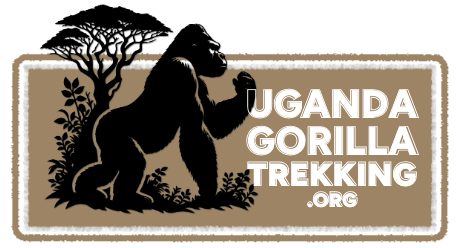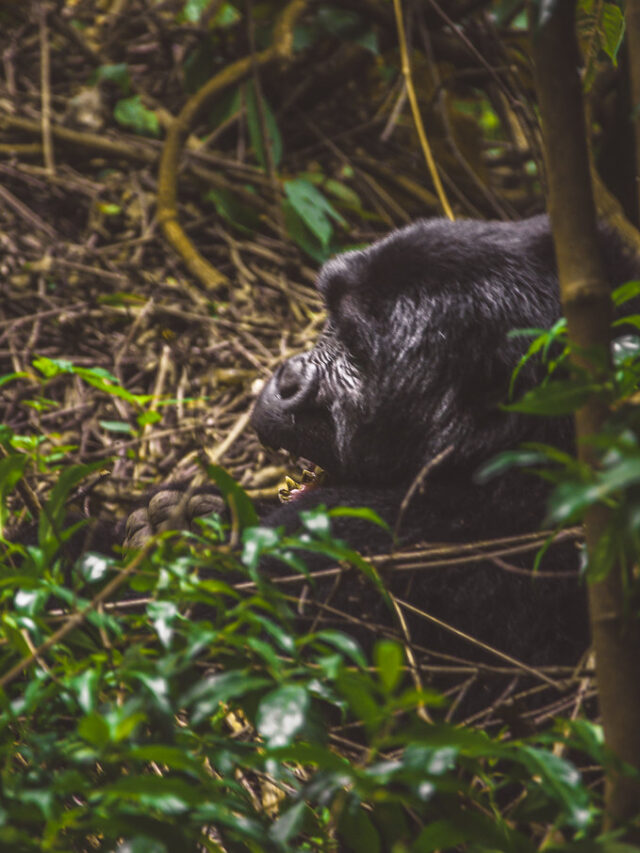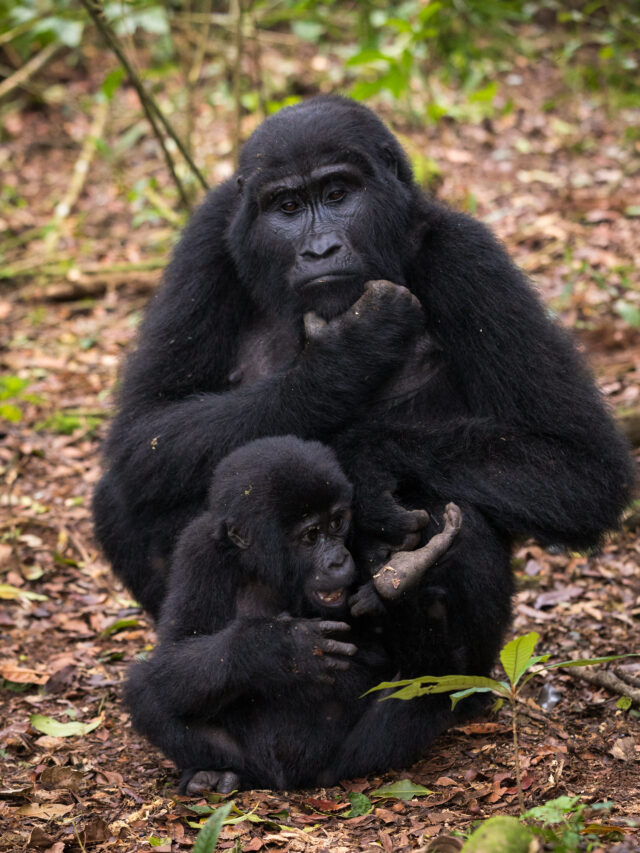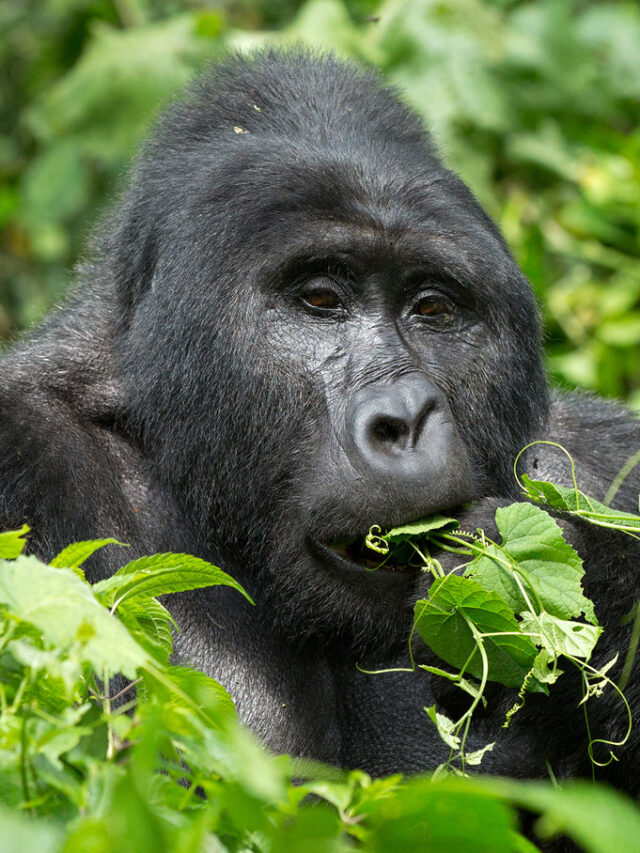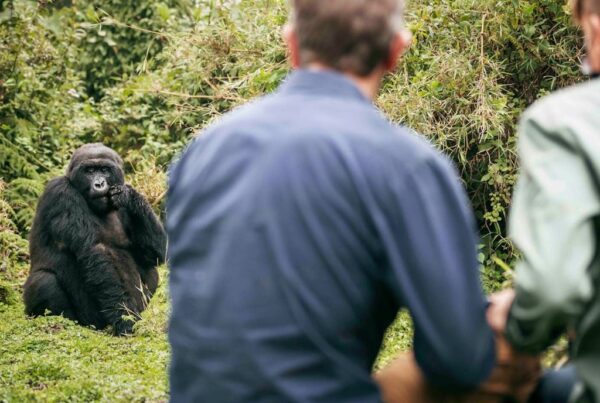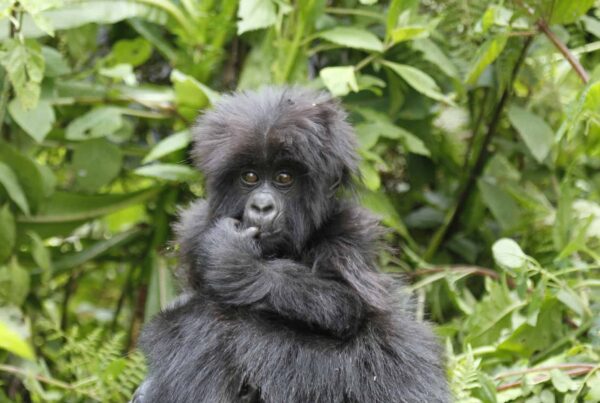Gorilla Habitats and the Challenges They Face: The Struggle to Preserve Nature’s Gentle Giants
A Deep Look into Where Gorillas Live—and What Threatens Their Survival
Hidden beneath the emerald canopies of Africa’s oldest rainforests and rugged volcanic slopes lies one of the world’s most emotionally captivating wildlife experiences: the natural habitat of gorillas. These powerful yet gentle primates do not live in zoos or laboratories of the wild—they thrive in some of the most complex, fragile, and breathtaking ecosystems on Earth. From the misty peaks of Uganda’s Bwindi Impenetrable Forest to the rain-soaked lowlands of the Congo Basin, gorillas are deeply tied to the lands they inhabit. But their survival is not secure. The habitats they call home are under immense pressure, and every inch of forest lost is a step closer to extinction.
Gorilla Habitats and the Challenges They Face — Understanding the nature of gorilla habitats—and the mounting challenges they face—is key to appreciating both the beauty and the fragility of these remarkable animals.
Where Gorillas Live: A Habitat of Mountains, Forests, and Silence
Gorillas live in dense tropical and subtropical forests across central and eastern Africa. Their habitat is rich in biodiversity, layered in complexity, and full of the quiet, earthy rhythms of life undisturbed. For mountain gorillas—found in Uganda, Rwanda, and the Democratic Republic of Congo (DRC)—the high-altitude regions of Bwindi Impenetrable National Park and the Virunga Mountains form their last remaining sanctuaries. These forests, cloaked in mist and moss, offer thick vegetation, varied elevation, and a moderate climate that supports their slow, deliberate way of life.
Lowland gorillas, including the western and eastern subspecies, live at lower altitudes across the vast Congo Basin. Their environment is flatter, hotter, and even more vast—stretching across countries like Cameroon, Gabon, Republic of Congo, and the Central African Republic. Here, the canopy is their roof, and the earth beneath their knuckles holds centuries of life and memory.
These habitats are not just physical spaces. They are emotional landscapes—places where gorillas raise their young, forage for food, form bonds, grieve losses, and live out entire lifespans largely unseen by humans. But these once-impenetrable forests are no longer safe from intrusion.
Habitat Loss: The Slow Disappearance of Gorilla Homelands
One of the gravest threats to gorilla habitats is deforestation. Across Africa, forests are being cleared at alarming rates for agriculture, charcoal production, logging, and settlement expansion. As human populations grow, especially in regions bordering protected areas, the demand for land increases. Smallholder farmers often encroach into gorilla territory, cutting trees to grow food or raise cattle. Commercial logging and mining—especially for minerals like coltan, gold, and diamonds—open deep scars in what were once untouched ecosystems.
In Uganda’s Bwindi, pressure on the forest edge remains constant. While the government and conservation partners have made significant strides in protecting core gorilla zones, buffer zones are still at risk. In the Congo Basin, logging roads open up remote areas to hunting, illegal wildlife trade, and further deforestation. The result is fragmented habitats—isolated patches of forest that cannot support large, genetically diverse gorilla populations.
For gorillas, the consequences of habitat loss are devastating. They are slow breeders, living in close-knit family groups that rely on vast home ranges to feed and shelter themselves. As forests shrink, food sources become scarcer, stress levels increase, and the risk of inbreeding and disease transmission rises.
Human-Wildlife Conflict: Sharing the Border of Survival
As humans and gorillas increasingly share overlapping territories, conflict becomes inevitable. Farmers living near national parks sometimes find gorillas raiding their crops—an act driven by habitat pressure, not aggression. These interactions can create resentment and lead to retaliation, endangering both gorillas and the delicate relationship between people and conservation efforts.
Moreover, poverty plays a complex role. In regions where communities lack access to education, employment, and basic services, the incentive to engage in illegal logging, bushmeat hunting, or land clearing is high. For conservation to work, the needs of people living around gorilla habitats must be addressed as part of the solution. Protected areas cannot function as isolated fortresses—they must be integrated with sustainable development goals that uplift both nature and local lives.
Poaching and Illegal Wildlife Trade
Though gorillas are not typically hunted for meat as widely as some other animals, they are still victims of poaching. In some regions, gorillas are killed for bushmeat, traditional medicine, or captured alive for the illegal pet trade. Even more tragically, poachers targeting other species often set traps—such as wire snares—that unintentionally injure or kill gorillas. Infants orphaned by poaching suffer immensely, losing the familial structure essential to their survival and emotional well-being.
Rangers and anti-poaching patrols, particularly in Uganda, Rwanda, and the DRC, have made incredible sacrifices to protect these animals. But the threat remains ever-present, especially in politically unstable regions where law enforcement is weak or absent.
Disease Transmission: A Hidden, Growing Risk
One of the more recent but increasingly dangerous challenges facing gorilla habitats is disease—particularly those that can jump from humans to gorillas. As our genetic relatives, gorillas are highly susceptible to many human illnesses. Even something as mild as a cold or flu can prove fatal to a gorilla.
The rise in ecotourism—especially gorilla trekking—has brought both funding and visibility to conservation, but it has also increased the risk of disease transmission. This is why Uganda’s wildlife authorities have strict rules for trekking: visitors must keep a distance of at least seven meters, wear masks, avoid contact if unwell, and spend no more than one hour with the gorillas. These rules aren’t just about etiquette—they are life-saving measures.
Climate Change: The Invisible Shift
Climate change may not leave scars as visible as chainsaws or bullet wounds, but its impact is quietly altering gorilla habitats. Rising temperatures, shifting rainfall patterns, and increased frequency of droughts and floods affect the availability of food, water, and nesting materials. Entire forest compositions may change over time, disrupting the delicate balance gorillas rely on. In mountainous habitats like those in Uganda and Rwanda, warming could push suitable vegetation zones higher, shrinking the viable living area for mountain gorillas.
Moreover, climate stress can intensify other threats. Crops may fail, increasing pressure on forests. Water scarcity may drive wildlife and people into closer contact. Disease patterns may shift, introducing new threats to already vulnerable populations.
A Path Forward: Hope Rooted in Action
Despite the immense challenges, there is hope. Uganda has become a shining example of how gorilla conservation can succeed when habitat protection, community empowerment, and sustainable tourism work together. Gorilla populations in Bwindi have slowly increased thanks to strict habitat management, community revenue sharing, and consistent research. Initiatives like eco-tourism, conservation education, and alternative livelihoods are proving that gorillas and humans can coexist—and even thrive—when given the right support.
But the work is far from over. Preserving gorilla habitats requires relentless commitment. It calls for international cooperation, local leadership, stronger environmental policies, and the global traveler’s willingness to travel responsibly. Every tree saved, every trap removed, every dollar spent wisely on sustainable tourism is a step toward keeping the forest alive—and with it, the last great apes of Africa.
